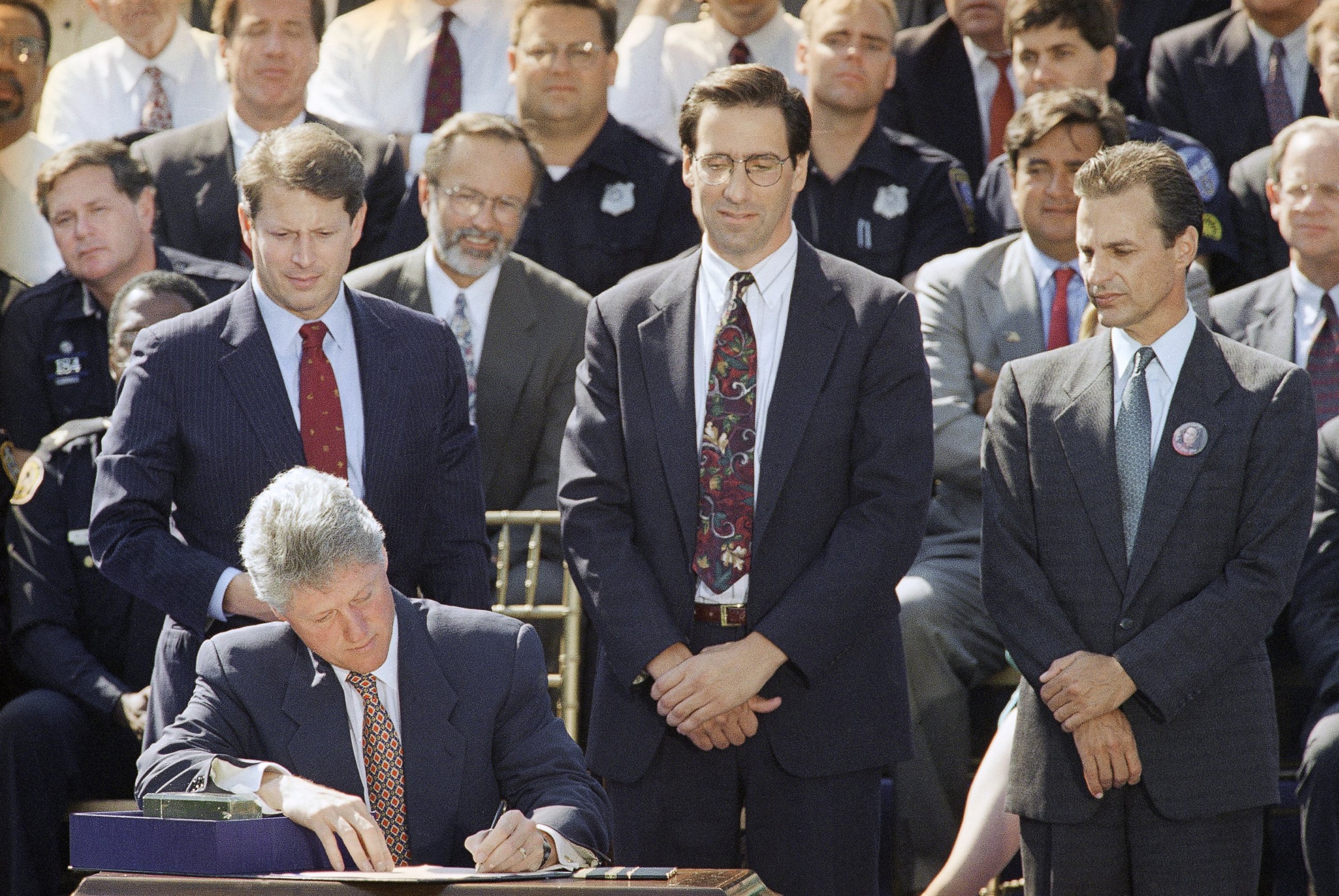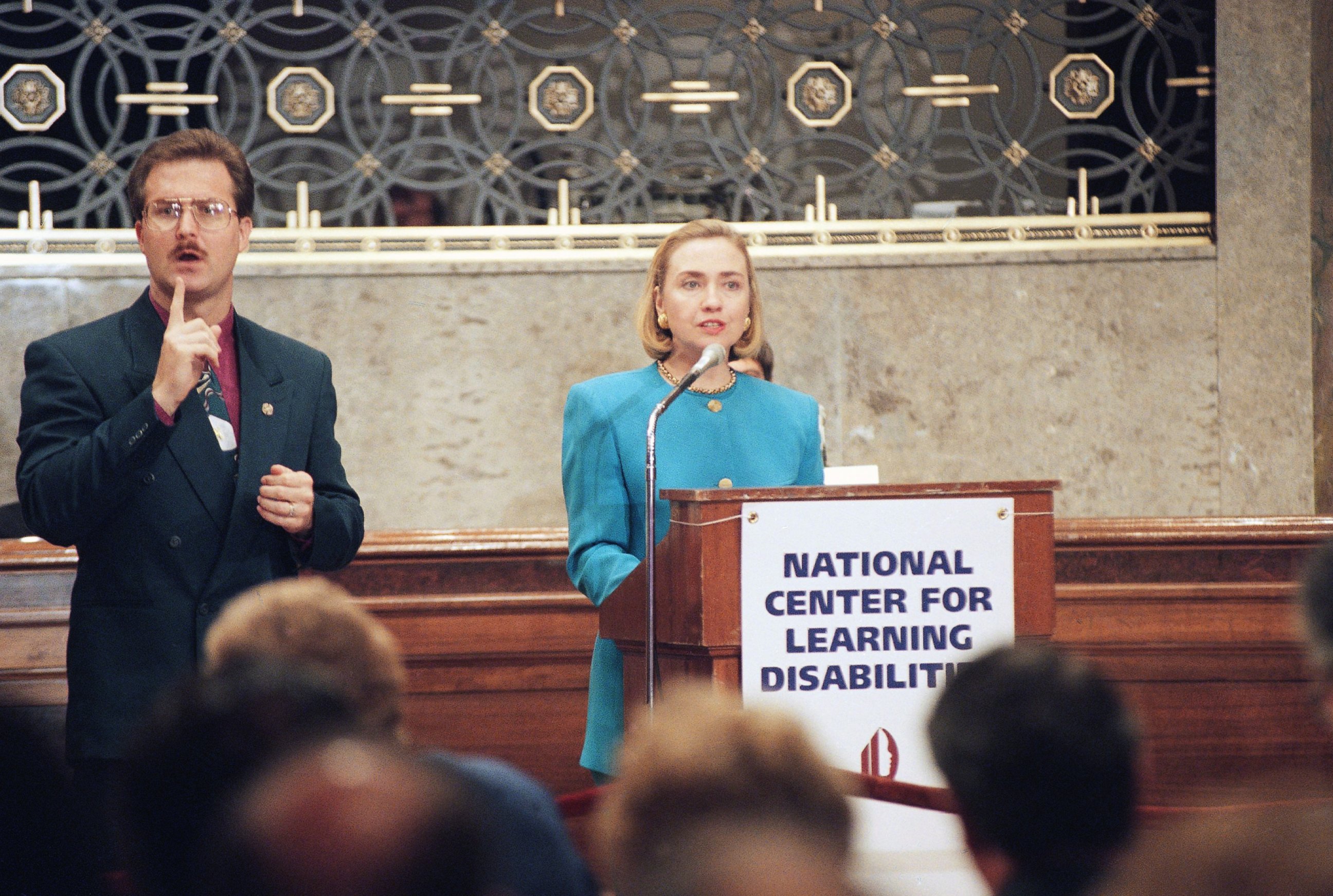What's Inside the Controversial 1994 Crime Bill That's Plaguing Hillary Clinton on the Campaign Trail
Former President Clinton signed the multi-pronged bill into law.
— -- One of the latest flash points in the Democratic presidential race is a crime bill signed into law more than two decades ago.
The Violent Crime Control and Law Enforcement Act, passed by then-President Bill Clinton in 1994, has caused outbursts from protesters and is bringing his time in the White House under scrutiny. Last week, Clinton clashed with protesters from the Black Lives Matter movement, defending the tough law.
Here's everything you need to know about the controversial law and why it's the subject of criticism now:

What the Law Did
The Violent Crime Control and Law Enforcement Act was passed with bi-partisan support in April 1994 and was originally written by another familiar politician: then-Sen. Joe Biden.
The crime bill was one of the largest in the country's history, with multiple initiatives to fight crime, and it came at a time when violent crime was at staggering heights. According to the the FBI, there were more than 713 violent crimes per 100,000 people in 1994. In context, that is the second-highest annual crime rate from 1993 until 2012, with 1993 having the highest violent crime rate of 747 per 100,000 residents.
Notably, the law helped pay for new federal prisons if states agreed to force offenders to serve 85 percent of their sentence as opposed to allowing them out early on parole.
"It looked on the books as if this was going to more than double the prison sentence lengths of offenders nationwide if the individual states would go for it," Professor Candace McCoy from John Jay College's Doctoral Program in Criminal Justice told ABC News.
"In actual impact, that law was considerably less severe than it appeared and that's because many states didn't go for it. The ones that did, such as New Jersey ... they applied it only to violent offenders. Well, most of those people were going to prison for very long times anyway so it increased the sentence lengths sometimes, but not much. They virtually abolished parole," she added.
One of the other more visible initiatives was the hiring of 100,000 more police officers across the country by paying for two-thirds of the new officers' salaries in participating cities.
"The idea behind this whole thing is it enabled the police to do their job more effectively," said former NYPD Sgt. Joe Giacalone, who joined the force in 1992.
There were many other facets to the law, but some of the most notable others are the creation of the federal "three strikes" rule, which mandated life in prison for people who had committed three violent felonies; the assault weapons ban, which stopped the manufacture of 19 semi-automatic firearms; and the removal of education grants for inmates.

Prompting Criticism Now
The law is largely criticized for causing incarceration rates to spike, particularly for minorities. But experts differ on the direct impact the crime bill had on mass incarceration.
Giacalone said that since so much focus was being paid to the crack epidemic at the time, one of polices' biggest targets were crack dealers, who were hit with longer sentences and higher fines. He conceded that the bill did cause prison rates to "balloon," noting "for every action of course there's a reaction."
But McCoy disagreed that the jump in mass incarceration was caused by the crime bill.
"It is not directly responsible for the worst excesses of mass incarceration or police militarization. It's simply not," McCoy said. "The mass incarceration came from the states, and Bill Clinton got on their bandwagon."
What the Clintons Have Said
The impacts of the 1994 bill have been discussed at different points during the 2016 race, and Hillary Clinton told the New York Daily News editorial board last week that she believes mass incarceration was an unintended consequence.
"That was not as apparent at the time, but part of being a responsible decision maker is to keep track of what’s happening.... And now I think it’s clear there were some consequences that we do have to address," she told the paper's editorial board.
Last summer, former President Clinton made a similar statement, noting that he "signed a bill that made the problem worse."




